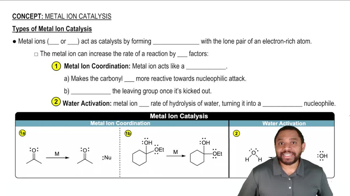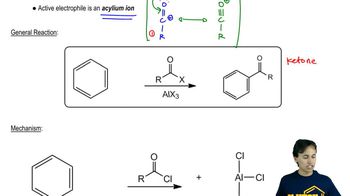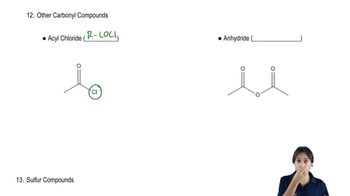Textbook Question
Predict the major products of the following reactions.
(d) nitrobenzene + acetyl chloride + AlCl3
 Verified step by step guidance
Verified step by step guidance Verified video answer for a similar problem:
Verified video answer for a similar problem:



 5:20m
5:20mMaster Friedel-Crafts Acylation with a bite sized video explanation from Johnny
Start learning